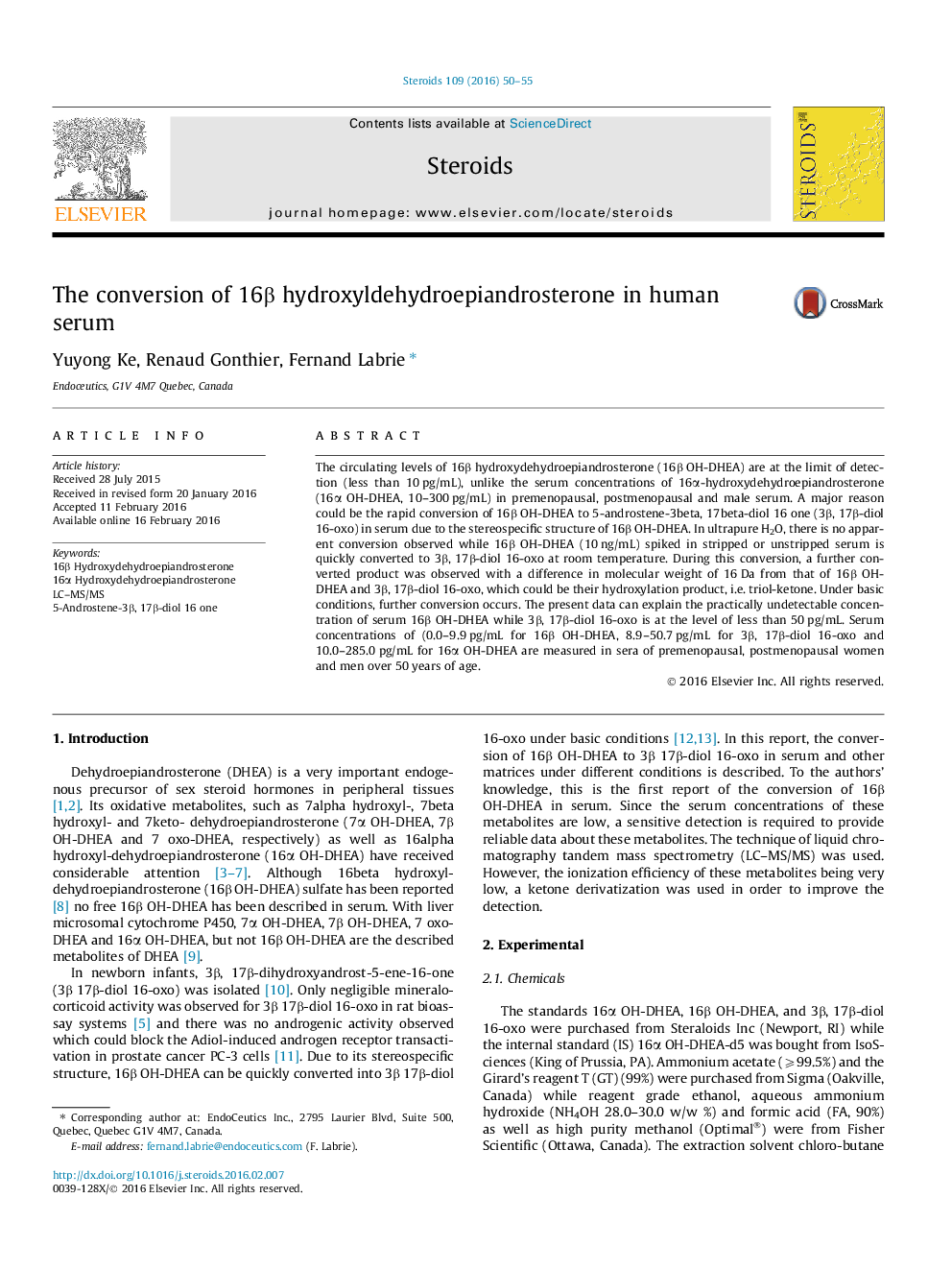| Article ID | Journal | Published Year | Pages | File Type |
|---|---|---|---|---|
| 2029121 | Steroids | 2016 | 6 Pages |
Abstract
The circulating levels of 16β hydroxydehydroepiandrosterone (16β OH-DHEA) are at the limit of detection (less than 10 pg/mL), unlike the serum concentrations of 16α-hydroxydehydroepiandrosterone (16α OH-DHEA, 10-300 pg/mL) in premenopausal, postmenopausal and male serum. A major reason could be the rapid conversion of 16β OH-DHEA to 5-androstene-3beta, 17beta-diol 16 one (3β, 17β-diol 16-oxo) in serum due to the stereospecific structure of 16β OH-DHEA. In ultrapure H2O, there is no apparent conversion observed while 16β OH-DHEA (10 ng/mL) spiked in stripped or unstripped serum is quickly converted to 3β, 17β-diol 16-oxo at room temperature. During this conversion, a further converted product was observed with a difference in molecular weight of 16 Da from that of 16β OH-DHEA and 3β, 17β-diol 16-oxo, which could be their hydroxylation product, i.e. triol-ketone. Under basic conditions, further conversion occurs. The present data can explain the practically undetectable concentration of serum 16β OH-DHEA while 3β, 17β-diol 16-oxo is at the level of less than 50 pg/mL. Serum concentrations of (0.0-9.9 pg/mL for 16β OH-DHEA, 8.9-50.7 pg/mL for 3β, 17β-diol 16-oxo and 10.0-285.0 pg/mL for 16α OH-DHEA are measured in sera of premenopausal, postmenopausal women and men over 50 years of age.
Keywords
Related Topics
Life Sciences
Biochemistry, Genetics and Molecular Biology
Biochemistry
Authors
Yuyong Ke, Renaud Gonthier, Fernand Labrie,
